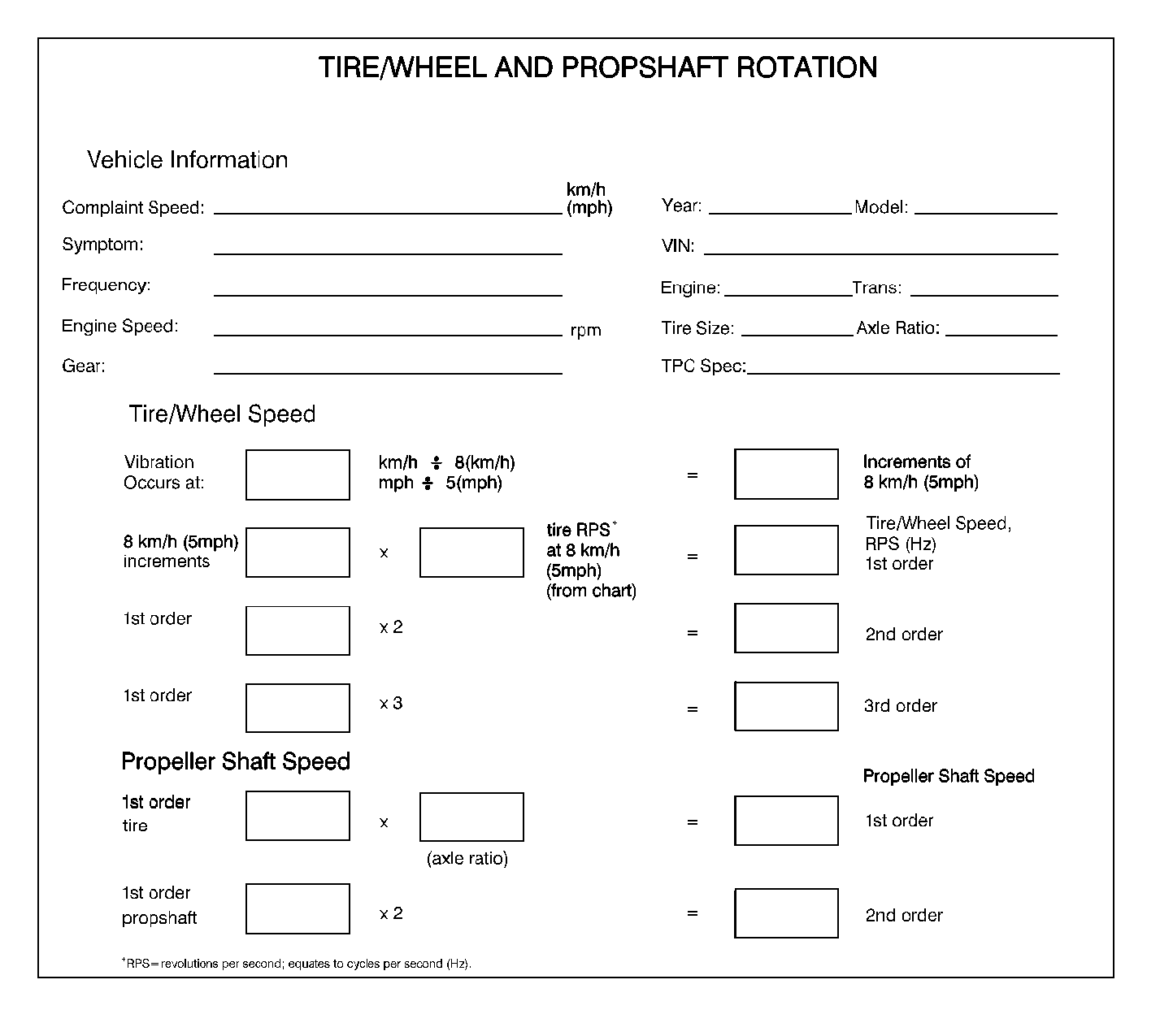At this point in the diagnosis, the vibration has gone through the following analysis:
| • | The vibration has been duplicated. |
| • | The vibration has been designated as abnormal. |
| • | The vibration has been related either to engine speed or to vehicle speed. |
| • | The vibration has been assigned a frequency from the EVA or identified based on its feel or its sound. |
Automotive vibrations are usually related to the rotating speed of a component. Calculate the speed of these components using either an engine speed method or a vehicle speed method. Use the engine RPM readings taken during the road test in order to diagnose the vibrations that are sensitive to engine speed.
If the vibration is sensitive to vehicle speed, determine the rotational speed of the tires. As long as you operate the vehicle at a constant speed, the tires will operate at a constant speed. This speed is measured in rotations, or cycles per second. The reading is then compared to the frequency of the vibration, which is also measured in cycles per second.
Calculating Tire Rotation

Determine the rotational speed of the tires in revolutions per second, or Hertz (Hz), based on the vehicle speed at which the vibration occurs. In order to determine the rotational speed, use the following procedure:
- Determine the speed at which the vibration occurs.
- Determine the number of 8 km/h (5 mph) increments:
- Determine the vehicle tire size.
- Locate on the table below, the Hertz value at 8 km/h (5 mph) for that tire size.
- Multiply the Hertz value by the number of 8 km/h (5 mph) increments.
- The result is the rotational speed of the tires in Hertz at the complaint speed. If this figure matches the vibration frequency, a first-order vibration is present in the tire and wheel assembly.
| • | Divide the complaint speed by 8 when using kilometers. |
| • | Divide the complaint speed by 5 when using miles. |
For example, if the complaint speed is 60 mph, the number of increments is 12. According to the following table, a tire with size of P195/70R14 has a value of 1.17 Hz. You can calculate the rotational speed at 60 mph:
12 increments x 1.17 Hz = 14.04 Hz
Tire Size | Tread | Revs/Sec (Hz) at 5 MPH |
|---|---|---|
P195/70R14 | ALS | 1.17 |
P195/65R15 | AL2 | 1.17 |
P205/55R16 | AL3 | 1.17 |
Tread Types: | ||
| ||
| ||
| ||
Sometimes, the tire/wheel vibration may be of a higher-order. In order to compute possible higher-order vibrations, multiply the rotational speed of the tires, in Hertz, at the complaint speed by the order number. If any of these matches the vibration frequency, a vibration of that particular order is present in one of the tire/wheel assemblies.
Steering and Suspension Assembly Vibrations
Steering and suspension assembly vibrations are the first level of testing for low-frequency vibrations that are sensitive to vehicle speed. The symptoms of a steering/suspension first-order vibration are a shimmy or a shake. This is usually felt in the steering wheel or in the seat. Inspect the following components for wear or damage:
| • | The steering tie rod ends |
| • | The suspension ball joints |
